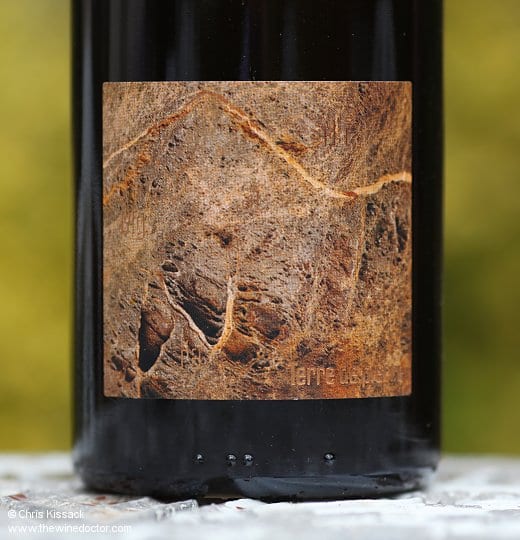Pierre Luneau-Papin Muscadet Sèvre et Maine Terre de Pierre 2010
I subscribe wholly to the concept of terroir which, when one considers that even at just one domaine every wine tastes different, no matter how rigorously the vigneron in question may adhere to the same methods across the range, seems to me to be an unquestionable truth. And although I sometimes rather lazily use the word terroir when really I am describing just one aspect of it, usually the soils or more pertinently the rocks that lie beneath them, terroir is of course multifaceted, going beyond mere geology to include aspect, drainage, mesoclimate (such as how exposed or sheltered the particular vineyard is) and numerous other features. Some would include the broader climate as part of the terroir, some the yeasts and insect life that typifies the vineyard, some even the winemaker him/herself.
Even so, there is no doubt that the most tangible aspect of terroir is the geological one. I have to confess that a passion for wine has led to an amateur interest in geology, although my knowledge remains very shallow, and limited to certain eras, such as the Turonian (Late Cretaceous, for Vouvray) and the Kimmeridgian (Late Jurassic, for Sancerre, as well as Chablis and parts of Champagne). In this interest I know I am not alone, and I am not surprised that many with a passion for wine and terroir eventually find themselves to be collectors of rocks. I have not really joined their ranks though; my ‘collection’ amounts to just two stones and therefore really doesn’t cut the mustard. I think perhaps I need to try a little harder!

The two stones in my possession are a creamy-white pebble I picked up and pocketed when walking at the back of Château d’Yquem one day, and a small pock-marked piece of dark-green serpentinite, similarly pocketed when standing atop the Butte de la Roche, just to the west of Nantes. As you might imagine from the wine featured here, which isn’t Yquem, it is this latter terroir that is of relevance. The Butte de la Roche (a butte is a small, isolated hill, often with steep sides although that’s not really the case here) has a rather magical feel to it. A spear-shaped finger of hill, it stands clear of the surrounding marais or marshland, a safe haven when the land around floods as it is prone to doing each winter. The hard rocks that are found underfoot here are interesting metamorphic forms typical of the Massif Armoricain; serpentinite is classically associated with this butte, although it actually comes interleaved with amphibolite and even a little gabbro, and near the foot of the butte there is more micaschist and gneiss.
Serpentinite is a relatively rare formation here; amphibolite, perhaps best associated with Jo Landron, is everywhere, even more so micaschist and gneiss. Gabbro is not so common on the butte, but is found in abundance around Gorges, near Clisson. But serpentinite is special, and it should perhaps come as no surprise that when a plot on the butte came up for sale a few years ago, the Luneau-Papin family – leading vignerons in the region – wasted no time in adding the vineyard to their portfolio. After all, they had been waiting for just such a plot to become available for quite a few years. The wine made from these vines was named Terre de Pierre, for Pierre-Marie Luneau-Papin, and their first vintage was 2008. The label (pictured), by the way, shows an internal cross-section of a piece of serpentinite, overlaid with the chemical symbols for some of the elements found in the rock, although unfortunately these are very difficult to make out. The 2010 vintage has a pale and shimmering hue, and the nose is very minerally – as I have noted on previous tastes – with a stony, oyster-shell character, nuanced with floral and light citrus scents, along with a twist of white pepper. There is a lovely substance to the palate, which shows quite a pure citrus-oil flavour, a fine definition and really a great character for Melon de Bourgogne. Overall this wine is tense, energetic, quite broad, and full of life on the long and polished finish. A very good, fairly serious and structured wine which will work well beyond the usual seafood and oyster matches, and which will I suspect also do rather well in the cellar. I have tucked one or two away to find out for myself. As it turns out, I am much more efficient at collecting bottles, than I am at collecting rocks. 17/20 (25/8/14)
Find Pierre Luneau-Papin Muscadet Sèvre et Maine Terre de Pierre 2010 on Wine Searcher: ![]()
